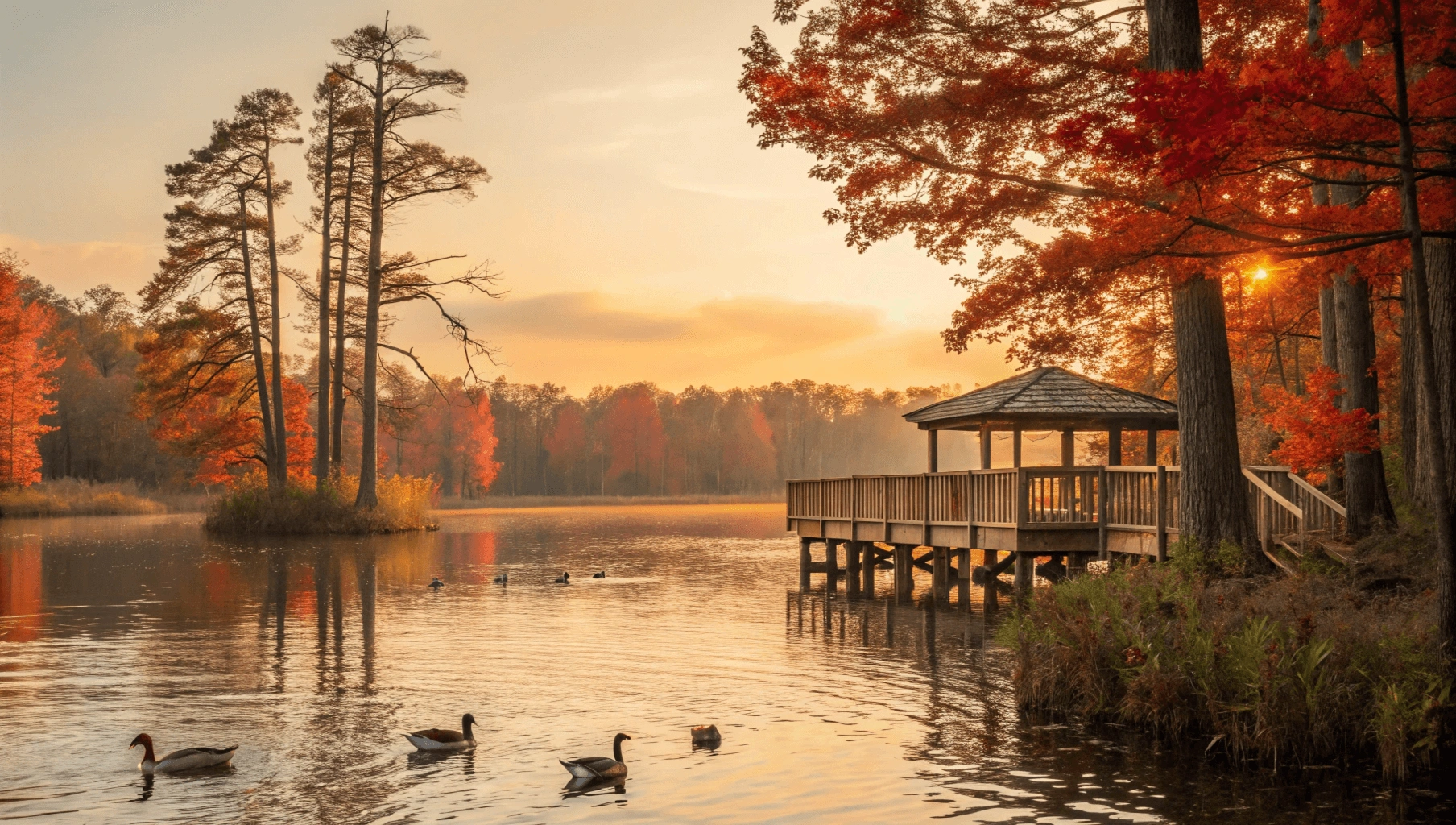Escape into Green Bay’s Hidden Natural Gem
Discover the serene beauty of Bay Beach Wildlife Sanctuary, a sprawling 700-acre urban oasis nestled in the heart of Green Bay. As the largest wildlife sanctuary in Wisconsin, this natural haven offers visitors an unparalleled opportunity to connect with nature without leaving the city. Whether you’re a wildlife enthusiast, an avid hiker, or a family looking for an educational outdoor adventure, this comprehensive guide will help you experience everything the Bay Beach Wildlife Sanctuary has to offer.
Table of Contents
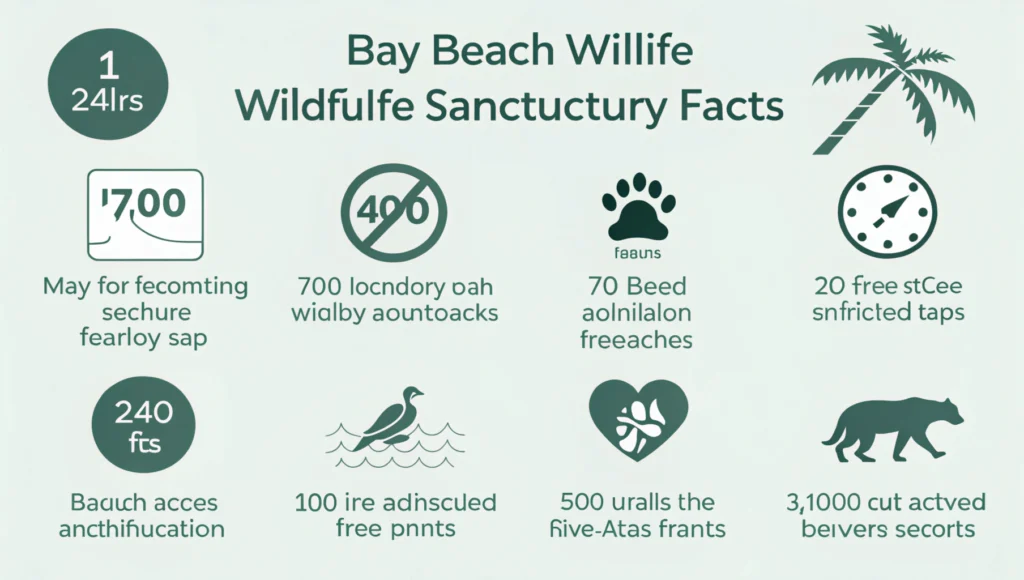
Quick Facts | At a Glance
| Feature | Details |
|---|---|
| Location | 1660 East Shore Drive, Green Bay, WI 54302 |
| Hours | Open daily 8:00 AM – 4:30 PM (Nature Center hours) |
| Admission | FREE (donations appreciated) |
| Size | 700 acres |
| Trails | 6+ miles of hiking trails |
| Wildlife | 4,500+ animals admitted annually for rehabilitation |
| Facilities | Nature Center, Observation Buildings, Wildlife Viewing Areas |
| Official Website | Bay Beach Wildlife Sanctuary |
What Makes Bay Beach Wildlife Sanctuary Unique?
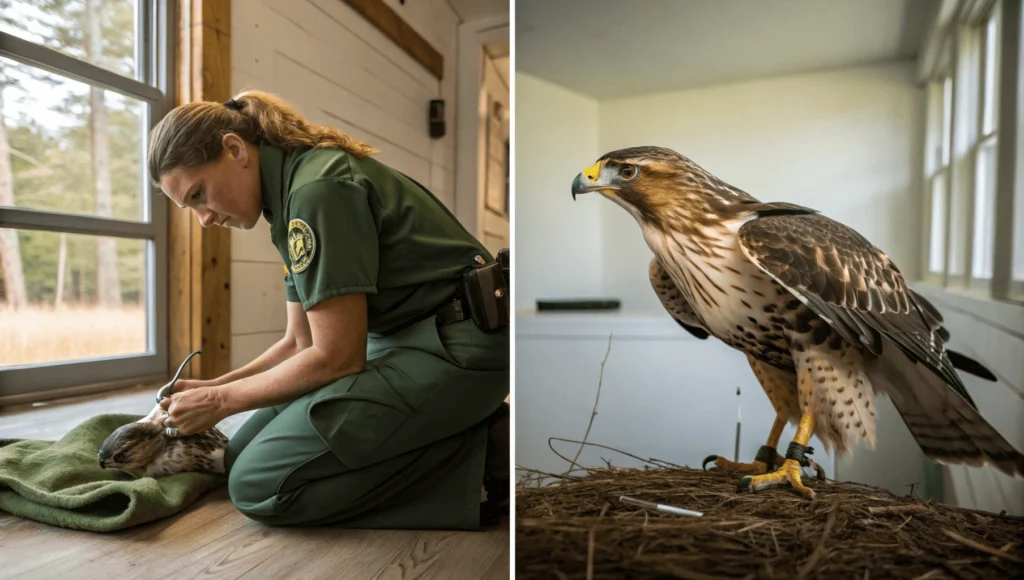
The Bay Beach Wildlife Sanctuary isn’t just another city park—it’s a thriving ecosystem and Wisconsin’s second-largest wildlife rehabilitation program. Established in 1936 as a site for waterfowl rehabilitation, it has evolved into a multi-faceted conservation center with an inspiring mission: to protect and preserve wildlife while educating the public about environmental stewardship.
Unlike conventional zoos or nature parks, the sanctuary maintains a delicate balance between serving as a public recreational space and functioning as a working wildlife rehabilitation facility. Each year, dedicated staff care for approximately 4,500 orphaned and injured animals, with the goal of releasing them back into their natural habitats whenever possible.
What truly sets Bay Beach Wildlife Sanctuary apart is its accessibility—both physically and conceptually. As an urban wildlife refuge situated within city limits, it provides a rare opportunity for visitors to experience diverse ecosystems including hardwood forests, ponds, marshes, and meadows without traveling to remote locations. Its free admission policy ensures that nature education and wildlife appreciation remain available to everyone, regardless of economic circumstances.
The sanctuary also plays a vital role in community education, offering year-round programs that foster environmental awareness and conservation values. From school field trips to seasonal workshops, these initiatives help build a community of environmentally conscious citizens dedicated to protecting Wisconsin’s natural heritage.
Planning Your Visit
Getting There
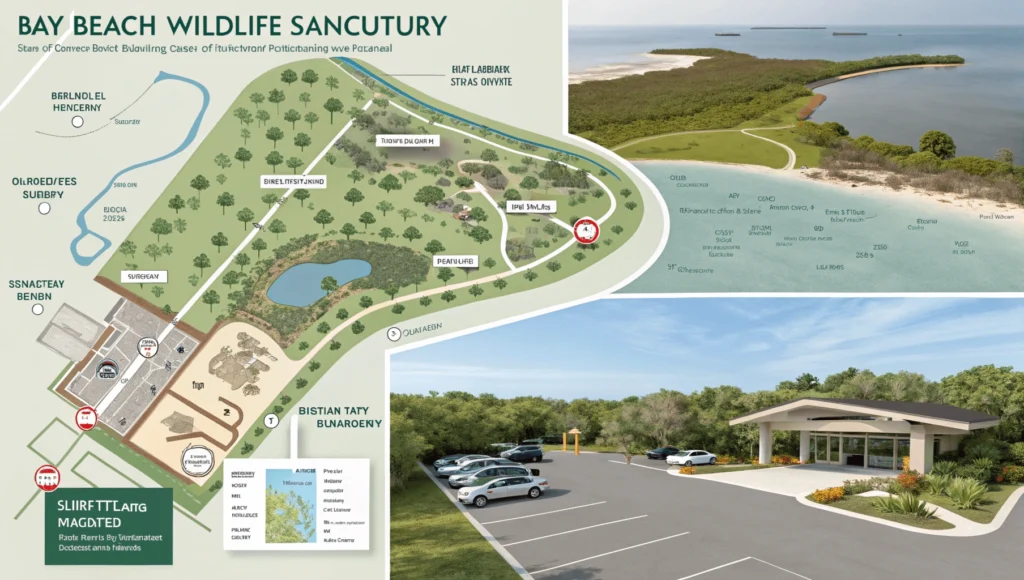
Address: 1660 East Shore Drive, Green Bay, WI 54302
By Car:
- From Downtown Green Bay: Head east on East Mason Street, turn north on Irwin Avenue, then east on East Shore Drive. The sanctuary entrance will be on your right.
- From I-43: Take exit 180 for Webster Ave toward East Shore Dr. Turn east onto East Shore Drive and continue for approximately 1 mile until you reach the sanctuary.
Parking: Free parking is available in several lots throughout the sanctuary. The main parking lot is located near the Nature Center, with additional parking areas near the observation buildings and trail entrances. <iframe src=”/api/placeholder/600/450″ width=”600″ height=”450″ style=”border:0;” allowfullscreen=”” loading=”lazy” referrerpolicy=”no-referrer-when-downgrade”></iframe>
Hours & Admission
The Bay Beach Wildlife Sanctuary grounds are open daily from 8:00 AM until sunset, year-round, allowing you to experience the changing seasons and wildlife activity throughout the day.
The Nature Center building is open:
- Monday through Friday: 8:00 AM – 4:30 PM
- Weekends: 9:00 AM – 4:00 PM
Admission is FREE for all visitors, though donation boxes are available throughout the sanctuary if you wish to support their wildlife rehabilitation and educational programs.
Pro Tip: Hours may vary on holidays or during special events. Always check the official website before planning your visit, especially during winter months when weather conditions might affect accessibility.
Best Times to Visit
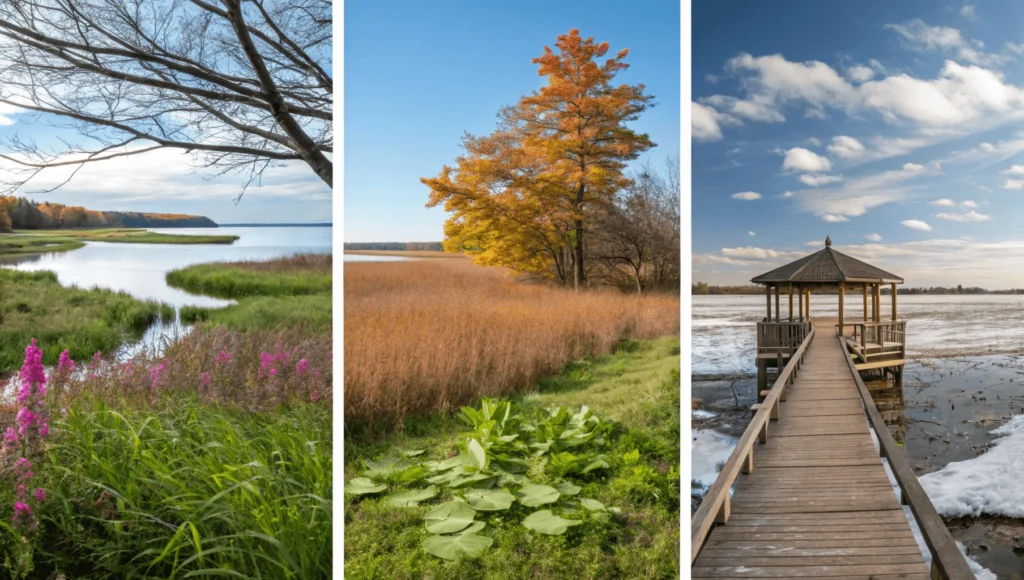
Each season at Bay Beach Wildlife Sanctuary offers unique wildlife viewing opportunities and natural beauty:
Spring (April-June)
- Witness the return of migratory birds
- Observe nesting behaviors and possibly new offspring
- Enjoy blooming wildflowers along the forest trails
- Best time: Early mornings for bird activity
Summer (June-August)
- Prime time for viewing deer, turkeys, and various waterfowl
- All trails accessible and in optimal condition
- Educational programs at their peak
- Best time: Early morning or late afternoon to avoid crowds and heat
Fall (September-November)
- Spectacular foliage creates stunning photography opportunities
- Wildlife more active preparing for winter
- Comfortable hiking temperatures
- Best time: Mid-morning after dew has dried but before afternoon crowds
Winter (December-March)
- Snow-covered landscape offers unique beauty
- Easier to spot wildlife against white background
- Less crowded, more serene experience
- Best time: Mid-day when temperatures are warmest
Accessibility
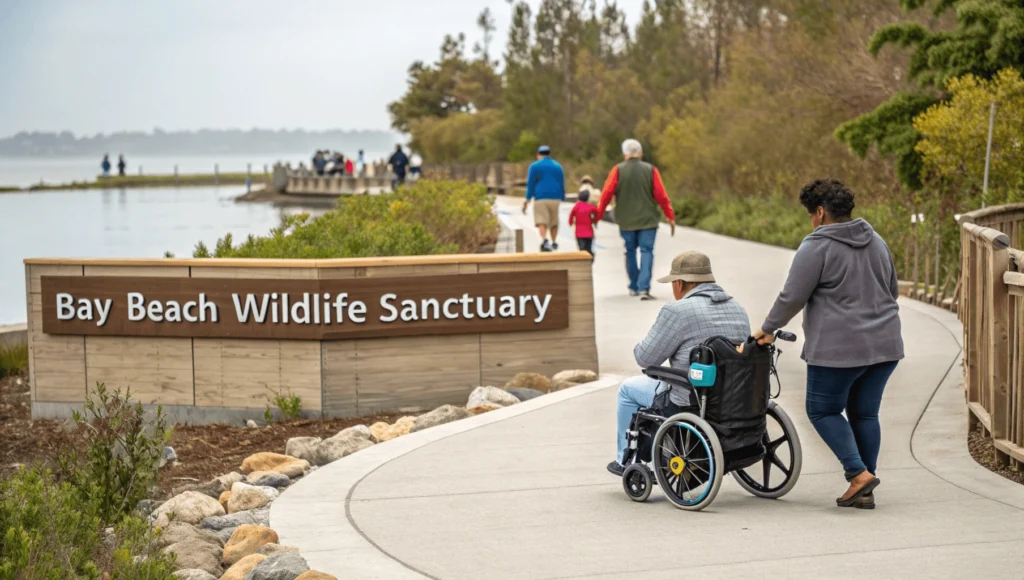
The Bay Beach Wildlife Sanctuary strives to be accessible to all visitors, with several accommodations:
- The Nature Center features wheelchair-accessible entrances, restrooms, and exhibits
- A quarter-mile paved trail around the main lagoon is suitable for wheelchairs and strollers
- The Wildlife Viewing Building has wheelchair access and large windows for comfortable wildlife observation
- Several observation decks have ramp access
However, it’s important to note that some of the woodland trails feature natural surfaces that may become challenging after rain or snow. The sanctuary continues to improve accessibility throughout its grounds.
What to Bring
For the most enjoyable visit to Bay Beach Wildlife Sanctuary, consider packing:
- Binoculars: Essential for spotting distant wildlife without disturbing them
- Camera: Capture memorable wildlife encounters and scenic vistas
- Comfortable, waterproof footwear: Many trails can become muddy after rain
- Water bottle: Stay hydrated, especially during summer months
- Sunscreen & hat: Limited shade on some trails and observation areas
- Bug spray: Recommended during summer months, especially for woodland trails
- Field guide: Enhance your experience by identifying local flora and fauna
- Bird seed or corn: Available for purchase at the Nature Center for authorized feeding areas
- Cash for donations: Support the sanctuary’s wildlife rehabilitation efforts
Things to Do & See
Wildlife Viewing
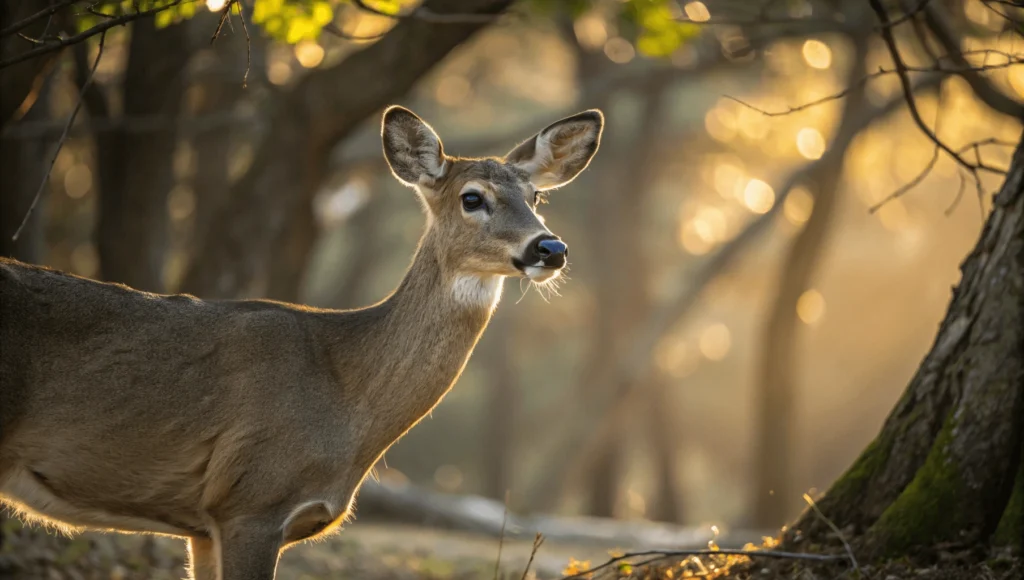
The Bay Beach Wildlife Sanctuary provides exceptional opportunities to observe Wisconsin’s native wildlife in their natural habitats. Here’s where to spot specific species:
Whitetail Deer
- Best viewed along the woodland edges, especially near Deerfield Trail
- Most active during dawn and dusk
- Look for their distinctive white tails when alarmed
Waterfowl
- The main lagoon hosts numerous species, including mallards, Canada geese, and wood ducks
- The Observation Building offers protected viewing with educational signage
- Early morning provides optimal viewing before crowds arrive
Wild Turkeys
- Frequently spotted along the forest edges near the eastern trails
- Listen for their distinctive gobbling calls in spring
- Most active during early morning hours
Red and Gray Fox
- Occasionally seen in meadow areas and along forest edges
- Dawn and dusk offer best viewing opportunities
- Patient, quiet observation is key
Wildlife Viewing Ethics: Maintain a respectful distance from all animals. Use binoculars instead of approaching wildlife. Keep voices low to avoid startling animals. Never feed wildlife except at designated feeding stations.
Hiking Trails
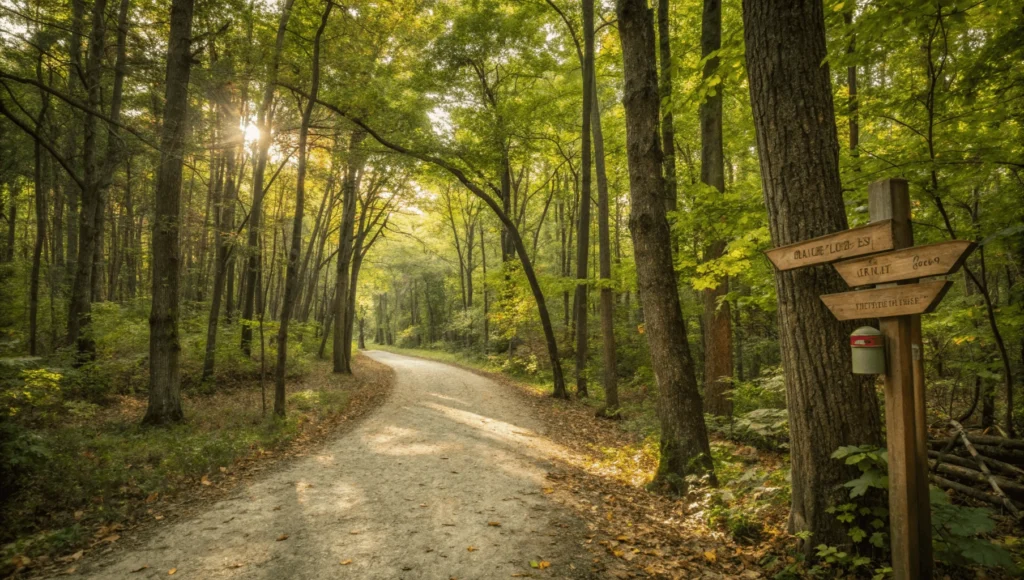
The sanctuary features over six miles of interconnected trails winding through diverse habitats:
Muskrat Trail (0.25 miles)
- Difficulty: Easy, fully accessible
- Surface: Paved path
- Highlights: Circles the main lagoon with multiple observation points
- Perfect for: Families with strollers, wheelchair users, brief visits
Woods Trail (0.75 miles)
- Difficulty: Easy to moderate
- Surface: Packed dirt with some wooden boardwalks
- Highlights: Mature hardwood forest, spring wildflowers, woodland birds
- Perfect for: Bird enthusiasts, nature photographers
Deerfield Trail (1.25 miles)
- Difficulty: Moderate
- Surface: Natural path with some uneven terrain
- Highlights: White-tailed deer sightings, meadow views, seasonal wildflowers
- Perfect for: Wildlife watchers, photographers seeking deer photos
Fox Trail (1.5 miles)
- Difficulty: Moderate to challenging
- Surface: Natural path with some inclines
- Highlights: Diverse forest habitat, best chance for fox sightings
- Perfect for: Experienced hikers seeking a longer walk
Boardwalk Trail (0.5 miles)
- Difficulty: Easy
- Surface: Elevated wooden boardwalk
- Highlights: Traverses wetland areas with unique plant life and birds
- Perfect for: Birdwatching, wetland exploration
Nature Center & Exhibits
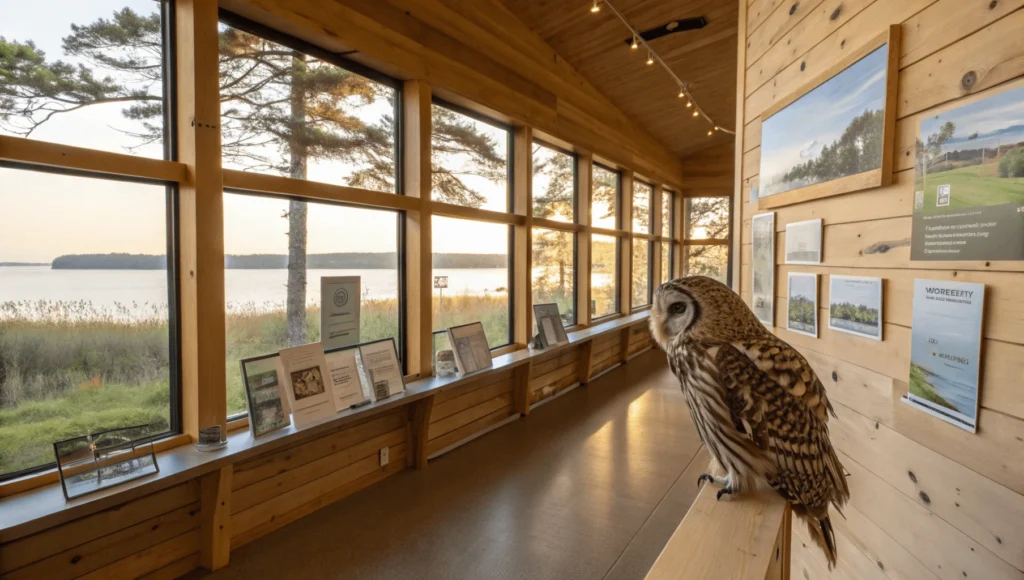
The Nature Center serves as the heart of the sanctuary’s educational mission, featuring:
- Live Animal Exhibits: Meet non-releasable resident animals including owls, hawks, and turtles
- Interactive Displays: Learn about local ecosystems through hands-on exhibits
- Wildlife Rehabilitation Viewing: Seasonal opportunities to observe the rehabilitation process
- Gift Shop: Purchase field guides, wildlife-themed merchandise, and animal feed for designated areas
- Environmental Education Classroom: Hosts workshops, lectures, and children’s programs
The center’s knowledgeable staff are always available to answer questions and enhance your understanding of the sanctuary’s wildlife and ecosystems.
Observation Areas & Towers
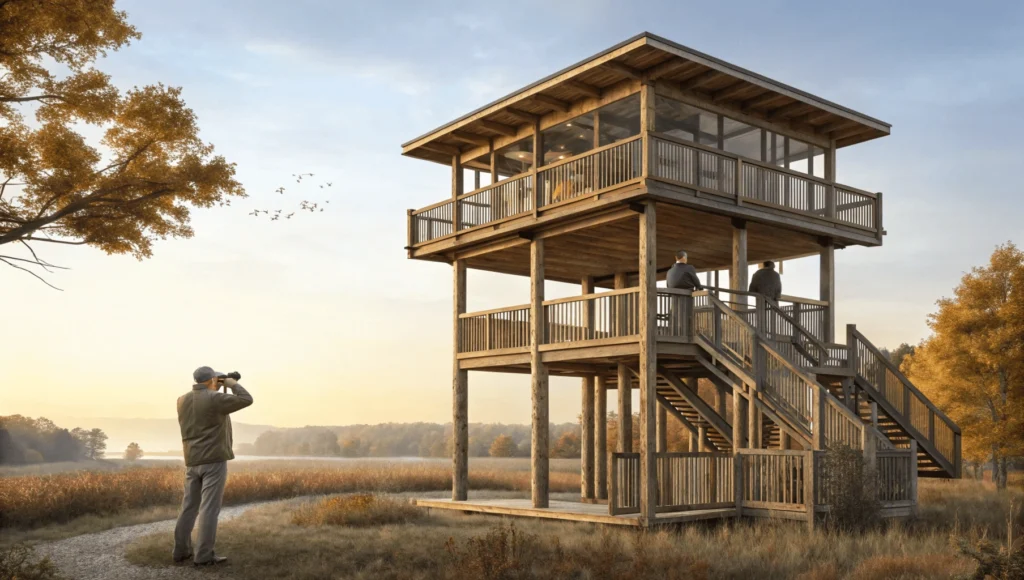
Strategic viewing locations throughout the sanctuary provide optimal wildlife watching:
Main Observation Building
- Indoor heated facility with large windows overlooking the main lagoon
- Educational displays identify common waterfowl species
- Comfortable seating for extended observation
- Accessible for all mobility levels
Wildlife Viewing Tower
- Three-story wooden structure near the eastern trails
- Provides elevated vantage point over meadow and forest edge habitats
- Excellent for early morning or late afternoon wildlife activity
- Spotting scopes available seasonally
Boardwalk Observation Platforms
- Multiple platforms along the wetland boardwalk
- Perfect for observing marsh birds and amphibians
- Informative signage about wetland ecosystems
Feeding the Animals
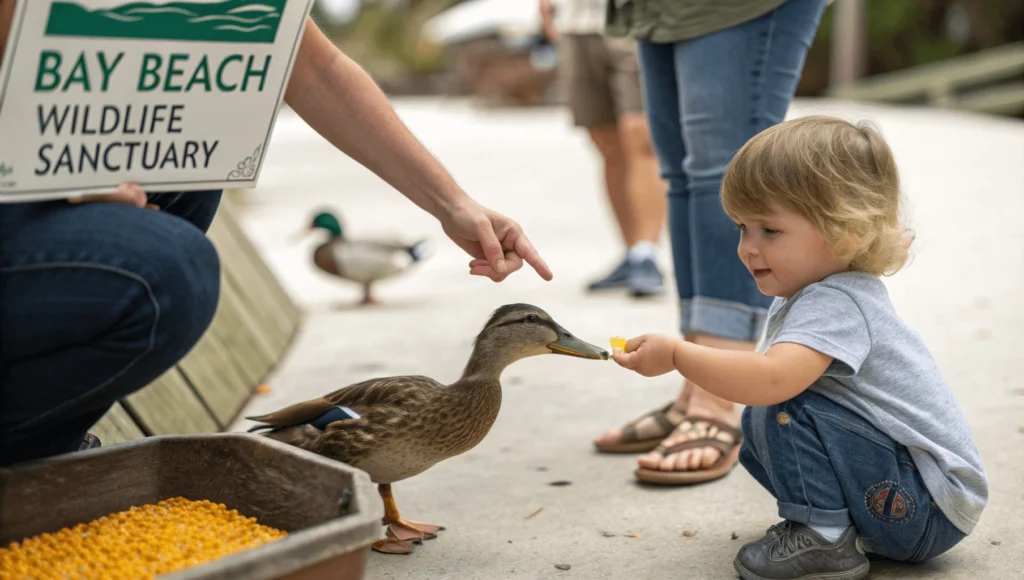
While feeding wild animals is generally discouraged, the Bay Beach Wildlife Sanctuary maintains designated feeding areas where visitors can safely interact with certain species:
- Waterfowl Feeding: Corn can be purchased at the Nature Center gift shop (50¢ per handful)
- Designated Feeding Areas: Located along the main lagoon path
- Feeding Guidelines: Only feed in authorized areas, use only sanctuary-provided food, avoid bread and human food which can harm wildlife
Important: Feeding is restricted to designated areas only. The sanctuary prohibits feeding any mammals, including deer, to maintain their natural behaviors and health.
Photography Hotspots
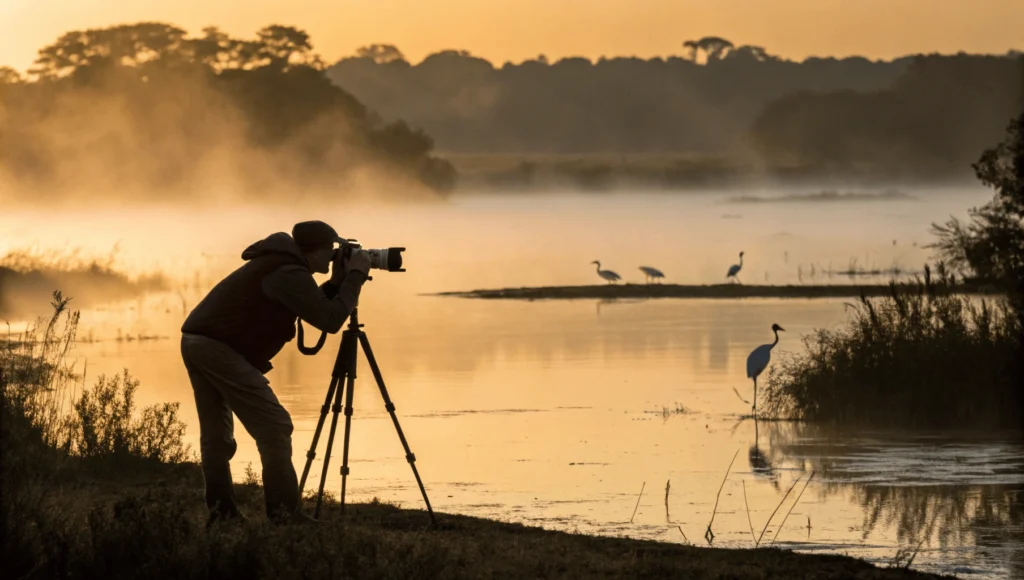
For photography enthusiasts, the sanctuary offers numerous prime locations for capturing wildlife and landscapes:
Main Lagoon (Morning Light)
- Subject: Waterfowl, reflections, sunrise over water
- Best Lens: 70-200mm for waterfowl, wide angle for landscapes
- Tip: Early morning provides calm water for perfect reflections
Boardwalk (Mid-day)
- Subject: Wetland birds, turtles, dragonflies
- Best Lens: 100-400mm with image stabilization
- Tip: Look for turtles sunning on logs during warmer months
Forest Trails (Filtered Light)
- Subject: Deer, wildflowers, woodland scenes
- Best Lens: 24-70mm for scenes, 100+ mm for wildlife
- Tip: After rain provides vibrant colors and mushroom opportunities
Wildlife Viewing Tower (Golden Hour)
- Subject: Panoramic views, deer in meadows
- Best Lens: Telephoto for wildlife, wide angle for landscapes
- Tip: Last hour before sunset offers warm lighting and active wildlife
Programs & Events
The sanctuary offers a rich calendar of educational programs and seasonal events:
Guided Nature Walks
- Weekly in summer, monthly in other seasons
- Led by knowledgeable naturalists
- Focus on seasonal highlights and wildlife behavior
Wildlife Educational Programs
- Regular presentations featuring live education animals
- Topics range from owl ecology to turtle conservation
- Suitable for all ages
Seasonal Special Events
- Spring: “Migration Celebration” (May)
- Summer: “Wild Wednesday” children’s programs (June-August)
- Fall: “Fall Festival” with guided foliage hikes (October)
- Winter: “Winter Wildlife” tracking workshops (January-February)
For current program schedules and registration information, visit the Events Calendar on the official website.
Wildlife Spotlight
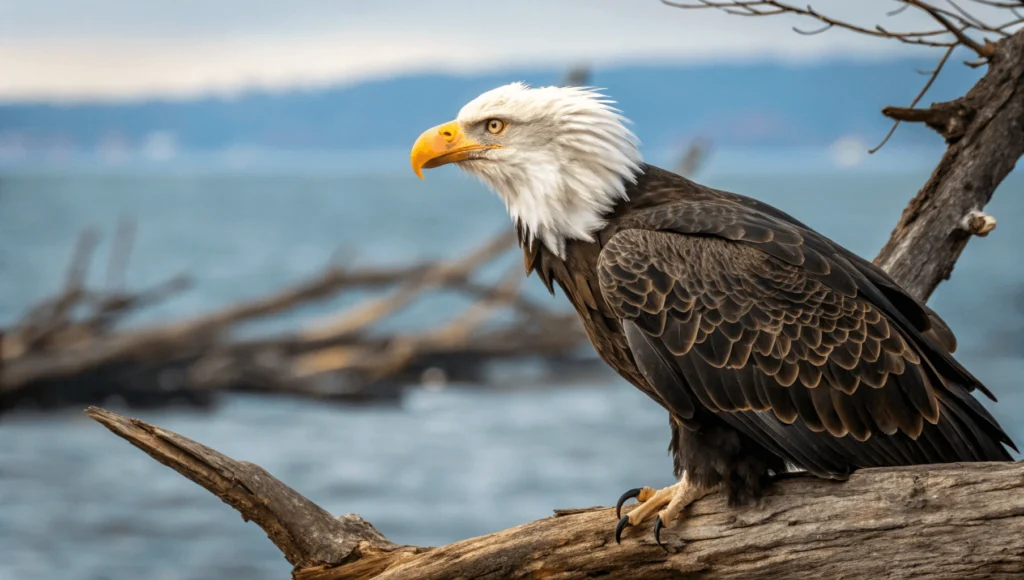
American Bald Eagle
The Bay Beach Wildlife Sanctuary plays a crucial role in rehabilitating these majestic birds, which have made a remarkable comeback in Wisconsin.
Conservation Status: Removed from endangered species list in 2007, but still protected under federal law
At the Sanctuary: The rehabilitation program treats several injured eagles annually, primarily for lead poisoning from ingested fishing tackle and ammunition fragments.
Viewing Opportunities:
- A non-releasable bald eagle resides in the sanctuary’s raptor exhibit
- Wild eagles occasionally fish in the sanctuary’s lagoons during winter months
- Best viewing time is early morning near water bodies
Interesting Facts:
- Eagles can spot prey from nearly a mile away
- They can live up to 30 years in the wild
- Nests can weigh up to 2,000 pounds and be used for decades
Wood Duck
One of North America’s most colorful waterfowl species, wood ducks are year-round residents at the sanctuary.
Conservation Status: Population recovered after near extinction in early 1900s thanks to conservation efforts including nest box programs
At the Sanctuary: The sanctuary maintains numerous wood duck nesting boxes, contributing to successful breeding populations.
Viewing Opportunities:
- Main lagoon and smaller ponds throughout spring and summer
- Look for females with ducklings in late spring
- Males display vibrant breeding plumage February through June
Interesting Facts:
- Ducklings jump from nesting cavities as high as 50 feet within 24 hours of hatching
- One of few duck species with sharp claws for perching in trees
- Form monogamous pairs each breeding season
Eastern Red Fox
These adaptable predators help maintain a healthy ecosystem within the sanctuary.
Conservation Status: Common but facing urban challenges
At the Sanctuary: A small population utilizes the diverse habitats within the sanctuary boundaries.
Viewing Opportunities:
- Early morning along Fox Trail and meadow edges
- Winter months offer better visibility against snow
- Look for distinctive red coat and white-tipped tail
Interesting Facts:
- Can hear rodents moving underground
- Have been observed catching fish in shallow water
- Cache excess food by burying it for later consumption
- Capable of reaching speeds up to 30 mph when chasing prey
Rules, Regulations & Etiquette
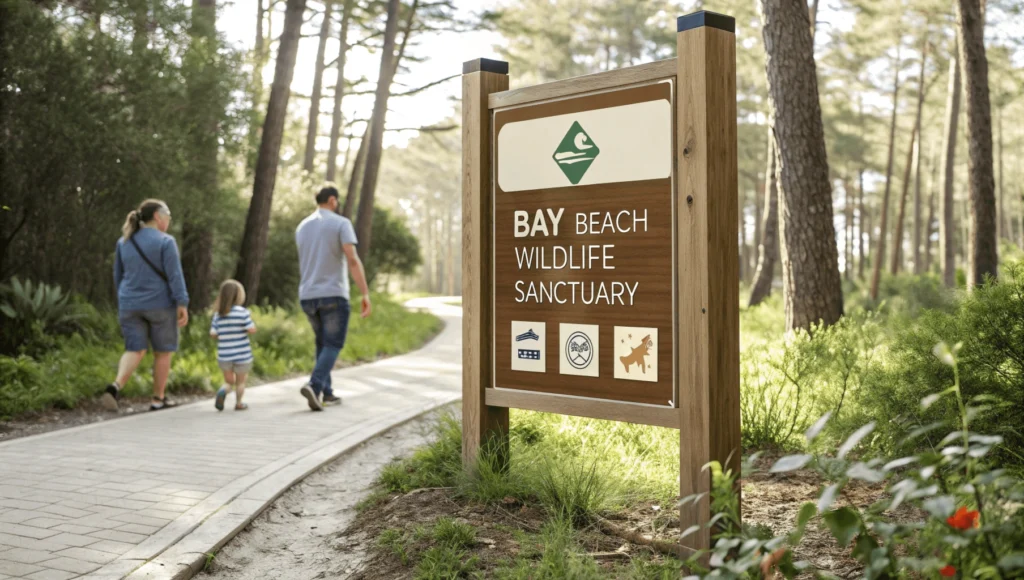
Help protect this natural treasure by following these important guidelines:
Trail Use
- Stay on marked trails to protect vegetation and wildlife habitat
- Bicycles and motorized vehicles are not permitted on trails
- Cross-country skiing and snowshoeing allowed on designated winter trails only
Wildlife Protection
- Observe animals from a respectful distance
- No hunting, trapping, or fishing within sanctuary boundaries
- Feed animals only at designated feeding stations with approved food
- Do not attempt to touch or handle wildlife
Pet Policy
- Pets are not allowed within the sanctuary to prevent wildlife disturbance
- Service animals are permitted in accordance with ADA guidelines
General Regulations
- The sanctuary closes at sunset; no overnight stays
- No alcohol consumption or smoking on premises
- Drones are prohibited to prevent wildlife disturbance
- Leave no trace: pack out all trash
Help Us Protect the Sanctuary: Every visitor plays a role in preserving this special place for future generations. By following these guidelines, you contribute to the sanctuary’s conservation mission and ensure all visitors have a positive experience.
Insider Tips & First-Hand Experience
As frequent visitors to the sanctuary, we’ve gathered some insider knowledge to enhance your experience:
- Beat the crowds by arriving right at opening (8:00 AM) on weekdays. You’ll have trails largely to yourself and see maximum wildlife activity.
- The quietest trail is Fox Trail’s northern loop, which sees significantly less foot traffic than the main lagoon area.
- Wildlife photography secret: The small observation blind near the eastern pond offers incredible waterfowl shots in morning light without disturbing the birds.
- “I’ve been visiting for 15 years, and I always check the fallen logs along Deerfield Trail for basking turtles. There’s one spot about halfway through where you can regularly see five different species sunning themselves on warm days.” – Local wildlife photographer
- Hidden viewpoint: Few visitors discover the small clearing halfway along Woods Trail that offers a unique perspective of the main lagoon through the trees.
- “For the best owl spotting, visit in late afternoon during winter months and walk quietly along the Woods Trail. Listen carefully near the large hollow oak about a quarter-mile in.” – Sanctuary volunteer guide
- Weather tip: After heavy rains, the eastern trails can become muddy. The elevated boardwalks and paved Muskrat Trail remain accessible regardless of weather conditions.
Beyond the Sanctuary
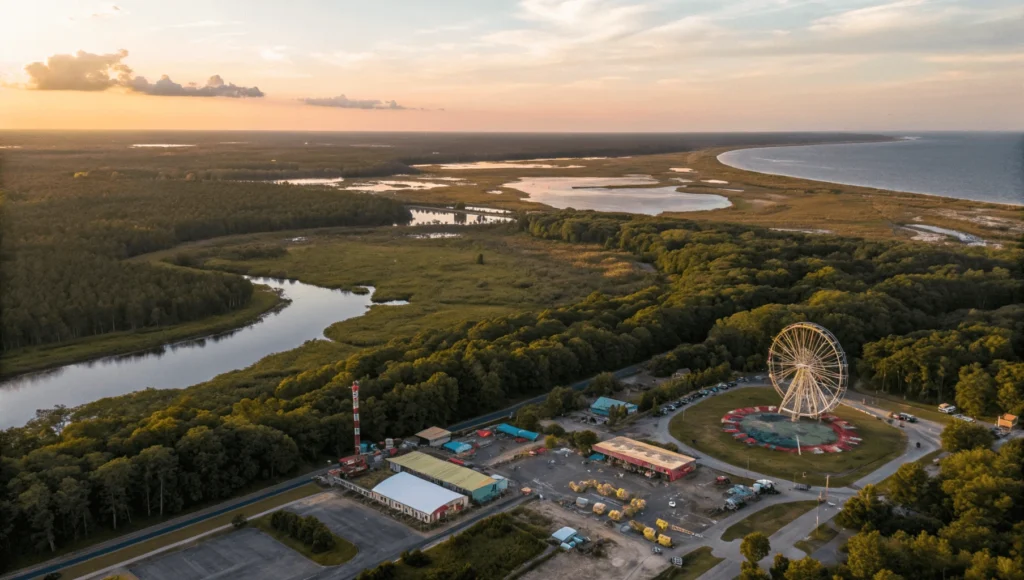
Make the most of your visit to Green Bay by combining your sanctuary experience with these nearby attractions:
Bay Beach Amusement Park (0.5 miles)
- Historic amusement park with rides and attractions
- Affordable family fun with rides starting at just 25¢
- Perfect afternoon complement to a morning sanctuary visit
NEW Zoo & Adventure Park (15 minutes)
- Regional zoo featuring animals from around the world
- Adventure park with ziplines and climbing opportunities
- Discounted combination tickets available seasonally
Green Bay Botanical Garden (20 minutes)
- 47 acres of stunning display gardens
- Seasonal events and educational programs
- Perfect for plant enthusiasts and photographers
Downtown Green Bay (10 minutes)
- Farmers markets (seasonal)
- Restaurants and local shopping
- Fox River Trail access points
Conclusion: Your Bay Beach Wildlife Sanctuary Adventure Awaits
The Bay Beach Wildlife Sanctuary stands as a testament to conservation success and community commitment to preserving natural spaces within urban environments. With its diverse wildlife, miles of scenic trails, and dedication to education and rehabilitation, the sanctuary offers something special in every season.
Whether you’re seeking a peaceful morning of birdwatching, an educational family outing, or a photographer’s paradise, this Green Bay gem delivers an authentic wildlife experience accessible to all. As you explore its forests, wetlands, and meadows, you become part of the sanctuary’s ongoing conservation story.
We invite you to share your own Bay Beach Wildlife Sanctuary experiences in the comments below. What wildlife did you spot? Which trail was your favorite? Your insights help build our community of nature enthusiasts and assist future visitors in discovering all that this remarkable place has to offer.
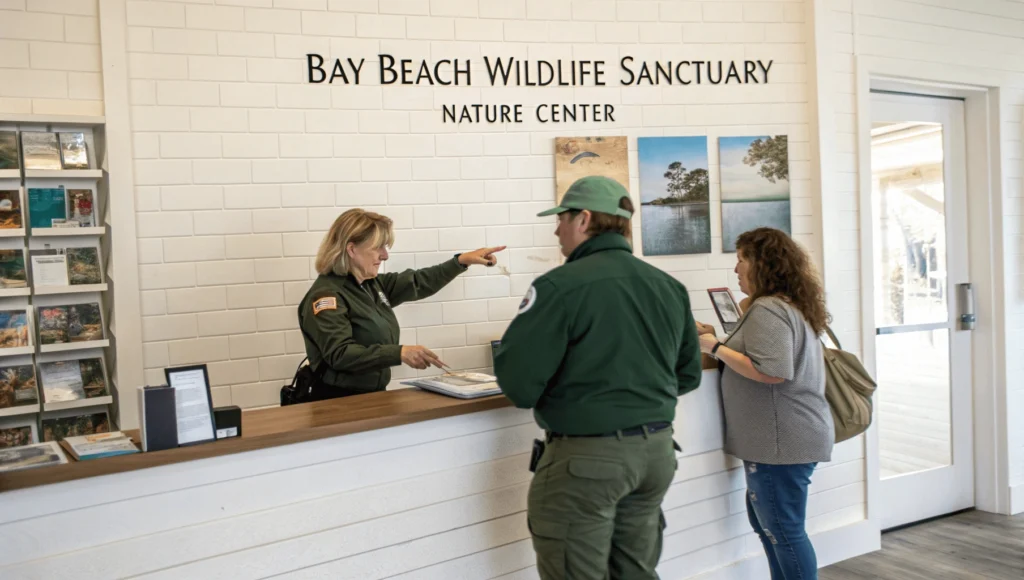
Frequently Asked Questions
Is the Bay Beach Wildlife Sanctuary really free?
Yes, admission to the sanctuary is completely free for all visitors. The sanctuary operates through city funding, donations, and volunteer support. Donation boxes are available if you wish to contribute to their wildlife rehabilitation efforts.
Are dogs allowed at Bay Beach Wildlife Sanctuary?
No, pets including dogs are not permitted within the sanctuary boundaries to protect the wildlife and maintain their natural behaviors. Service animals are the only exception, in accordance with ADA guidelines.
Can you fish at the Bay Beach Wildlife Sanctuary?
No, fishing is not allowed within the sanctuary as it’s a protected wildlife habitat. However, there are several excellent fishing spots nearby along the Bay of Green Bay shoreline.
Is the sanctuary open year-round?
Yes, the Bay Beach Wildlife Sanctuary grounds are open daily year-round from 8:00 AM until sunset. The Nature Center has regular hours throughout the year, though they may be reduced during winter months.
Are strollers and wheelchairs able to access the trails?
The main Muskrat Trail around the lagoon is paved and accessible for strollers and wheelchairs. The Nature Center and main observation building are also fully accessible. Some woodland trails have natural surfaces that may be challenging for wheeled mobility devices.
Can I feed the animals at the sanctuary?
Feeding is only permitted at designated waterfowl feeding areas using corn purchased from the Nature Center. Feeding any other wildlife, including deer and squirrels, is prohibited to maintain their health and natural behaviors.
Are there restrooms available on the trails?
Restroom facilities are available at the Nature Center and near the main parking area. There are no restrooms along the outer trails, so plan accordingly before setting out on longer hikes.
What happens to injured wildlife brought to the sanctuary?
The sanctuary operates one of Wisconsin’s largest wildlife rehabilitation programs. Injured and orphaned animals receive professional care with the goal of releasing them back to the wild when possible. Animals that cannot be released may become permanent education residents.
Can I volunteer at the Bay Beach Wildlife Sanctuary?
Yes, the sanctuary offers volunteer opportunities for adults and teens in various capacities, from animal care to visitor services. Contact the volunteer coordinator through the official website for current opportunities.
Is there a gift shop at the sanctuary?
Yes, the Nature Center houses a gift shop offering wildlife books, educational toys, local crafts, and sanctuary-themed merchandise. Purchases support the sanctuary’s programs and wildlife rehabilitation efforts.

